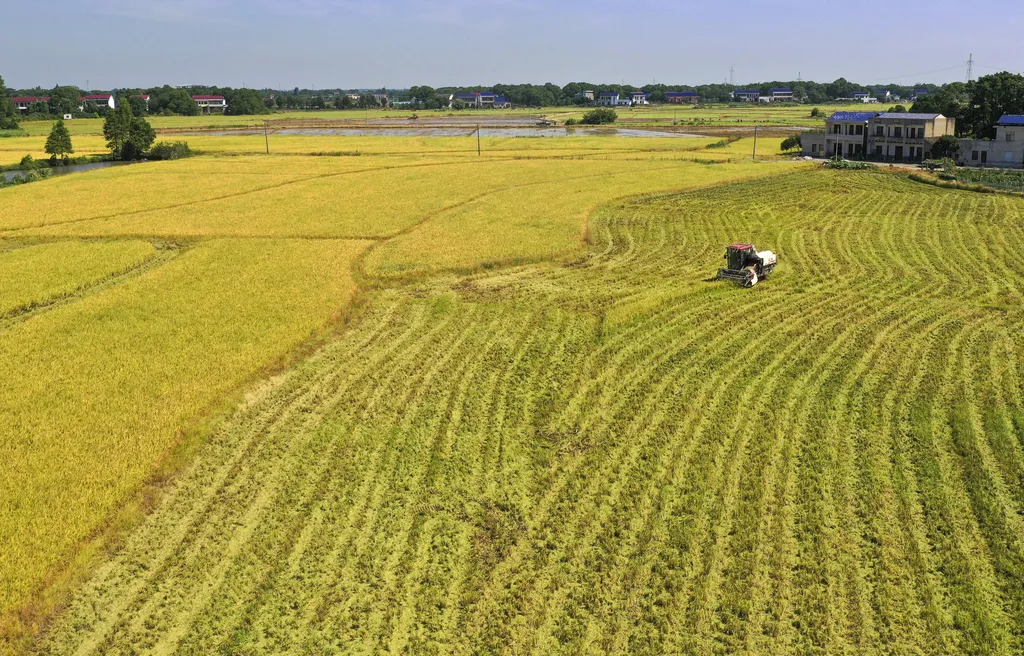In the heart of China, researchers have uncovered a novel gene that could reshape the future of rice cultivation, offering a tantalizing glimpse into the potential of genetic modification to boost crop yields and adapt to changing climates. The study, led by Yinhua Ma from the College of Agriculture and Biotechnology at Hunan University of Humanities, Science and Technology, has revealed that the overexpression of a specific transcription factor, OsMYBS1, in rice plants leads to significant changes in plant morphology, photosynthesis, and agronomic performance.
The findings, published in *Frontiers in Plant Science* (translated to “Frontiers in Plant Science” in English), suggest that OsMYBS1 plays a pivotal role in regulating plant growth and development. By overexpressing this gene, the researchers observed a range of morphological alterations, including reduced plant height, broader and yellowing flag leaves, and decreased chlorophyll content. These changes, while seemingly detrimental at first glance, were accompanied by an increase in the number of tillers and panicles, ultimately resulting in no decrease in total grain yield per plant.
“The most striking aspect of our findings is the multifaceted role of OsMYBS1 in modulating plant growth and development,” said Yinhua Ma, the lead author of the study. “This gene not only influences leaf morphology and chloroplast biogenesis but also has a significant impact on key agronomic traits, such as tiller number and seed-setting rate.”
The study’s transcriptomic analysis identified a substantial number of differentially expressed genes (DEGs) associated with chloroplast biogenesis, photosynthesis, and metabolic processes. This indicates that OsMYBS1 may influence chloroplast development and function, which are critical for efficient photosynthesis and overall plant health.
The implications of this research extend beyond the realm of academia, with potential applications in the energy sector. Rice, as a staple crop, plays a crucial role in global food security. Enhancing its yield and resilience to environmental stresses could have profound economic and social impacts. Moreover, understanding the molecular mechanisms governed by OsMYBS1 could pave the way for developing new breeding strategies to improve key agronomic traits in rice and other crops.
“This study provides a foundation for future investigations into the molecular mechanisms governed by OsMYBS1,” Ma added. “By unraveling the intricate web of gene interactions, we can unlock the full potential of this transcription factor to enhance crop productivity and adaptability.”
As the world grapples with the challenges of climate change and a growing population, the need for innovative solutions in agriculture has never been more pressing. The discovery of OsMYBS1 offers a promising avenue for improving rice cultivation, with the potential to revolutionize the way we approach crop breeding and genetic modification. With further research and development, this breakthrough could shape the future of agriculture, ensuring food security and sustainability for generations to come.

